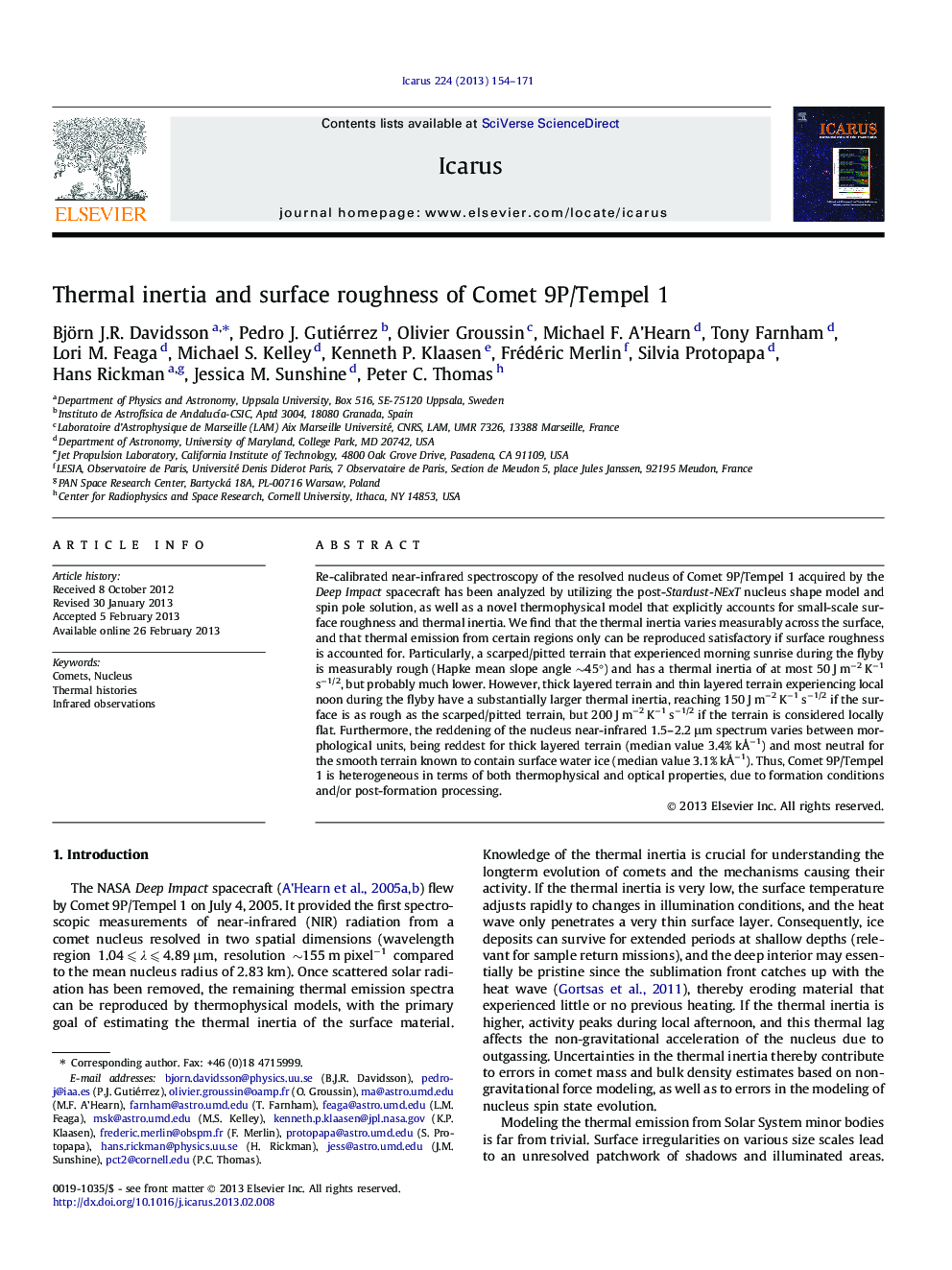| کد مقاله | کد نشریه | سال انتشار | مقاله انگلیسی | نسخه تمام متن |
|---|---|---|---|---|
| 1773537 | 1021137 | 2013 | 18 صفحه PDF | دانلود رایگان |

Re-calibrated near-infrared spectroscopy of the resolved nucleus of Comet 9P/Tempel 1 acquired by the Deep Impact spacecraft has been analyzed by utilizing the post-Stardust-NExT nucleus shape model and spin pole solution, as well as a novel thermophysical model that explicitly accounts for small-scale surface roughness and thermal inertia. We find that the thermal inertia varies measurably across the surface, and that thermal emission from certain regions only can be reproduced satisfactory if surface roughness is accounted for. Particularly, a scarped/pitted terrain that experienced morning sunrise during the flyby is measurably rough (Hapke mean slope angle ∼45°) and has a thermal inertia of at most 50 J m−2 K−1 s−1/2, but probably much lower. However, thick layered terrain and thin layered terrain experiencing local noon during the flyby have a substantially larger thermal inertia, reaching 150 J m−2 K−1 s−1/2 if the surface is as rough as the scarped/pitted terrain, but 200 J m−2 K−1 s−1/2 if the terrain is considered locally flat. Furthermore, the reddening of the nucleus near-infrared 1.5–2.2 μm spectrum varies between morphological units, being reddest for thick layered terrain (median value 3.4% kÅ−1) and most neutral for the smooth terrain known to contain surface water ice (median value 3.1% kÅ−1). Thus, Comet 9P/Tempel 1 is heterogeneous in terms of both thermophysical and optical properties, due to formation conditions and/or post-formation processing.
► The first thermophysical analysis of a resolved comet nucleus considering roughness.
► Spectral reddening and thermal inertia vary between morphological units.
► Reddening varies between 2.2 and 4.6%/kA.
► Thermal inertia varies between 0 and 50 MKS in some locations to 150–200 MKS elsewhere.
Journal: Icarus - Volume 224, Issue 1, May 2013, Pages 154–171